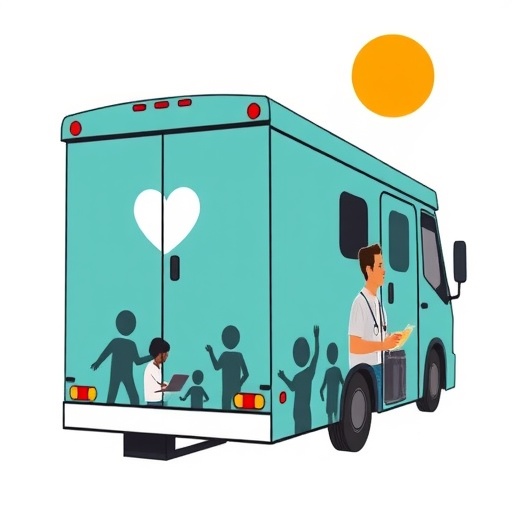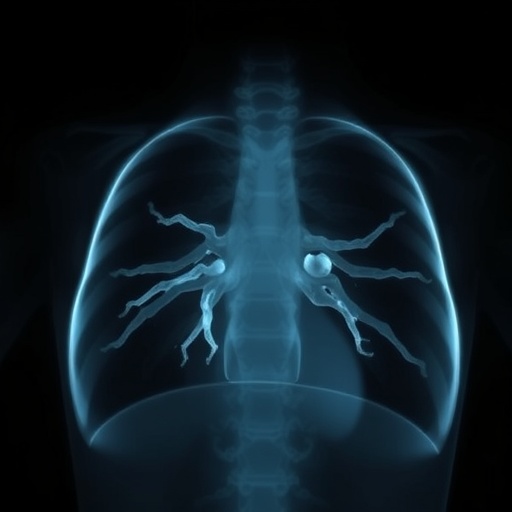In a groundbreaking study that could reshape our understanding of HIV management, researchers have unveiled new insights into the long-term effects of initiating antiretroviral therapy (ART) at the earliest stages of HIV-1 infection. This work shines a spotlight on how a temporary course of ART, started during the primary phase of the infection, influences the persistence and behavior of the virus within the host over extended periods. The findings have profound implications for strategies aiming to achieve sustained viral remission and perhaps, one day, a functional cure for HIV.
HIV-1 infection is characterized by a rapid spread of the virus following exposure, during which the virus establishes itself in various reservoirs within the body. These reservoirs harbor latent viral DNA integrated into the host’s genome, eluding the immune system and the effects of ART. Typically, ART suppresses viral replication effectively, but it is unable to eradicate these hidden reservoirs, which become the formidable barriers to curing HIV. The timing of ART initiation has long been suggested to influence reservoir size and composition, but definitive longitudinal data on the impact of early temporary treatment were lacking until now.
The study focused on individuals diagnosed during the primary HIV-1 infection stage—a brief window shortly after viral acquisition, marked by high viral loads and acute immune activation. This phase presents a critical opportunity, as the viral reservoir is thought to be smaller and less genetically diverse compared to chronic infection. Researchers administered ART immediately upon diagnosis but limited the treatment duration to a temporary course rather than lifelong therapy. They then monitored viral markers and reservoir characteristics over years following treatment interruption.
.adsslot_AUvrJKpQ1y{ width:728px !important; height:90px !important; }
@media (max-width:1199px) { .adsslot_AUvrJKpQ1y{ width:468px !important; height:60px !important; } }
@media (max-width:767px) { .adsslot_AUvrJKpQ1y{ width:320px !important; height:50px !important; } }
ADVERTISEMENT
One of the key revelations was that initiating ART during this acute phase significantly impacts the long-term viral reservoir. Patients who received temporary ART exhibited substantially lower levels of integrated HIV-1 DNA in their blood cells years after stopping therapy compared to untreated individuals. This suggests that the early suppression of viral replication constrains the establishment and expansion of the reservoir, thereby reducing the latent viral burden that typically fortifies HIV persistence.
Moreover, the data revealed nuanced changes in the quality of the viral reservoir. Early ART seemed to preserve HIV-1 variants that are more genetically uniform and possibly less replication competent. This effect is critical because a diverse and replication-competent reservoir increases the risk of viral rebound once treatment halts. By curbing this diversification, early ART may enhance the chances of long-term viral control through immune mechanisms or future therapeutic interventions.
Another fascinating dimension explored was the immune response’s role in viral control post-treatment. The researchers observed that early ART initiation might preserve or restore critical aspects of the immune system, such as HIV-specific cytotoxic T lymphocyte functionality, which are often compromised during chronic infection. Maintaining these immune responses could be instrumental in suppressing viral replication and keeping the virus in check once therapy ceases.
Technically, the investigators employed sophisticated molecular assays to quantify and characterize the reservoir, including measurements of total and integrated HIV-1 DNA, viral RNA levels, and analyses of viral genetic sequences. These approaches allowed them to dissect reservoir composition with unprecedented resolution, affirming that early ART indeed alters the viral landscape fundamentally. Importantly, the consistent follow-up over several years fortifies the study’s conclusions about the durability of these effects.
While the study’s design offers compelling evidence about the benefits of early temporary ART, it also raises critical questions about optimal treatment duration and timing. How long should therapy be maintained during primary infection to maximize reservoir reduction without imposing excessive burdens and toxicity? Could intermittent ART cycles capitalize on these findings? These questions set the stage for further clinical trials and mechanistic studies striving to refine treatment paradigms.
These findings bolster the rationale behind ‘treatment as prevention’ strategies, emphasizing that early diagnosis and swift initiation of ART can have ramifications that extend well beyond immediate viral suppression. Early interventions may reshape the underlying viral architecture, possibly rendering patients better candidates for future curative approaches, including therapeutic vaccines or latency reversal agents aimed at purging the viral reservoir.
Importantly, the study underscores the exploitation of a critical therapeutic window—primary infection—that has historically been challenging to capture due to diagnosis delays. Enhancing HIV testing accessibility and immediacy becomes pivotal if such early interventions are to be widely implemented. The promise demonstrated by temporary ART regimens could motivate public health shifts towards more aggressive early treatment policies.
Still, translating these insights into clinical practice requires careful balancing of risks and benefits. Short-term ART interruption can entail potential dangers, including viral rebound and immune activation. Hence, comprehensive monitoring and personalized approaches are necessary to tailor therapy duration and timing appropriately. Additionally, the generalizability across diverse global populations with varying HIV subtypes remains to be established.
This pivotal work builds upon and extends the frontier of HIV cure research, demonstrating that manipulating early viral dynamics exerts powerful influences on the persistent reservoir. Such knowledge fuels optimism that functional cures—durable viral remission without continuous ART—are attainable goals underpinned by rigorous science and innovative clinical strategies.
In conclusion, this extensive investigation reveals that a limited course of antiretroviral therapy, commenced during the initial window of HIV-1 infection, can enact enduring changes on viral persistence. By reducing reservoir size, limiting viral diversity, delaying rebound, and preserving immune responses, early temporary ART agents demonstrate profound potential to alter the trajectory of HIV disease. As researchers continue to unravel the complex interplay between virus and host during the earliest stages, the prospect of harnessing these insights to achieve sustained remission advances rapidly towards reality.
Subject of Research: Long-term effects of temporary antiretroviral therapy initiated during primary HIV-1 infection on viral reservoir persistence and dynamics.
Article Title: Long-term effect of temporary ART initiated during primary HIV-1 infection on viral persistence.
Article References:
Pasternak, A.O., van Paassen, P.M., Verschoor, Y.L. et al. Long-term effect of temporary ART initiated during primary HIV-1 infection on viral persistence.
Nat Commun 16, 6989 (2025). https://doi.org/10.1038/s41467-025-62362-0
Image Credits: AI Generated
Tags: early antiretroviral therapyfunctional cure for HIVHIV research advancementsHIV reservoirs and latent infectionHIV-1 infection managementimpact of early treatment on HIVimplications for viral remissionlong-term effects of ARTlongitudinal study on HIV treatmenttemporary ART treatmenttiming of ART initiationviral persistence in HIV





